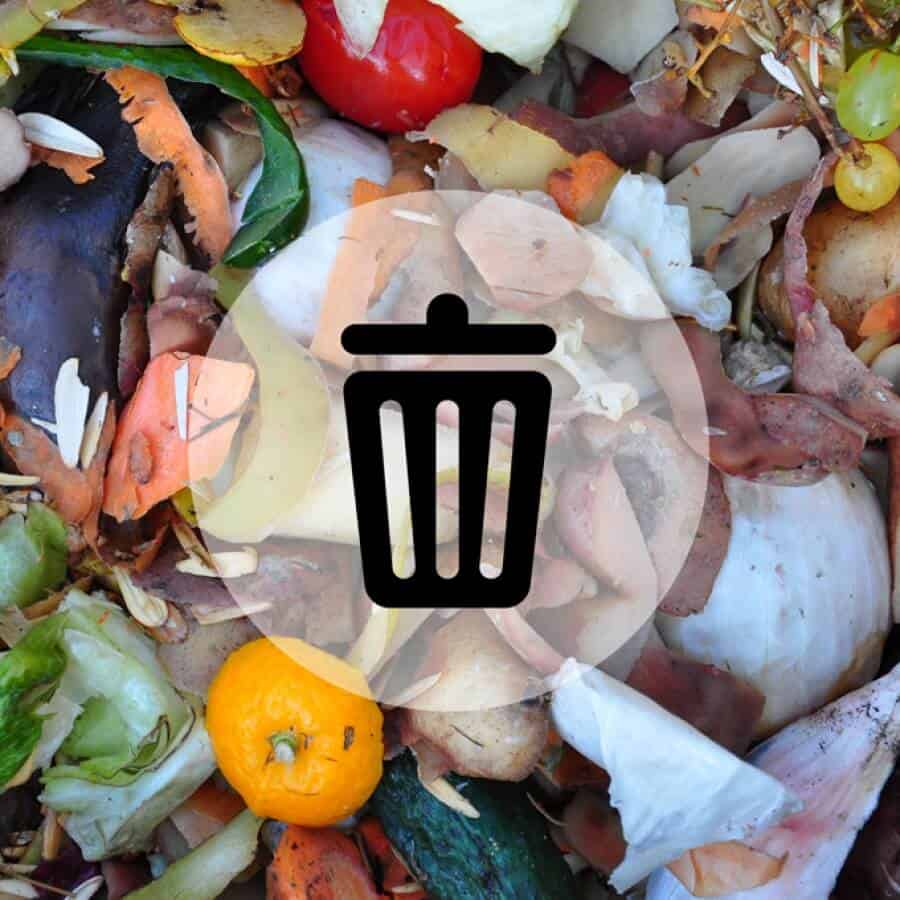The amount of food waste produced globally each year is more than enough to feed the one billion hungry people in the world. It is estimated that in Europe and the United States, each consumer wastes between 210 - 250 pounds of food per year. In reality, our trash cans are eating better than 25 percent of the world’s children.
But does this mean we should stuff ourselves to feel better about the “starving kids in Africa”? Nope, that’s not helping anybody. Cutting back on food waste is incredibly easy and, if we all play our part – could have a major positive impact on our world Here are a ten easy tips to reduce food waste at the store, at home and during meals.
Shop smart. It sounds simple, but one of the easiest and most important things you can do to combat food waste is to just be smarter about what you buy. Plan your meals, use grocery lists, and avoid impulse buys. This way, you’re less likely to buy things you don’t need and that you’re unlikely to actually consume.
Buy funny looking produce. We tend to pick our produce the same way we pick our next date. We choose the most attractive produce while the more blemished produce gets left on the shelves or thrown away. Most fruits and vegetables are wasted because their size, shape, or color don’t quite match what we think these things “should” look like. However, for the most part these items are perfectly good to eat. Give this funny looking produce a chance by buying the food that might otherwise be tossed.
Practice FIFO. This stands for First in, First Out. When unpacking groceries, be sure to put new items into the back of the fridge or cupboard and push old items to the front. This way, you’re more likely to use up the older stuff before it expires.
Designate one dinner a week as a “use it up” meal. Instead of buying ingredients to cook a new meal, look around your cupboards and fridge for leftovers that might otherwise be overlooked. Casseroles, frittatas, soups and smoothies are all easy dishes that embrace food that is close to going “bad”.
Monitor what you throw away. Manage a waste log and write down everything you throw out on a regular basis. You can even add the cost of each item to figure out how much money you are literally throwing in the trash. Are you throwing away half a loaf of bread a week? Why not freeze it and take out slices as you need them. If you’re constantly throwing away vegetables then buy them loose and reduce the amount you buy each week. When you pinpoint why and what you toss, you can make changes to your behavior.
Eat your leftovers. Brown-bag them to take to work or school for a free packed lunch. If you don’t want to eat leftovers right away, freeze them and save them for later. Just be sure to label them with the date so that they can be used in a timely fashion.
Have a plan B. More than 50 percent of thrown-away food items were purchased for a specific meal or special occasion that never happened. To avoid abandoning cabinet castaways, have a backup plan ready. Don’t toss that expensive Camembert because your fancy dinner party never happened. Instead come up with a backup recipe to use just in case.
Upcycle leftover food scraps. Repurpose vegetable scraps to make homemade stocks, or use citrus fruit rinds and zest to add flavor to other meals. You can also grow some fruits and veggies from leftover food scraps which can save you money and provide some interesting kitchen decor. Win/Win.
Compost it. Hate potato skins? Don’t feel like turning wilted vegetables into soup stock? No worries; food scraps still don’t need to be tossed. Just start a compost pile in the backyard or even under the sink, and convert food waste into a useful resource. Definite guide on how to compost can be found here.
Did you accidentally quadruple that casserole recipe? Gift it to friends, family, or neighbors — they’re likely to be grateful for the saved money and time. You can even register on a website like Share Your Meal, https://www.shareyourmeal.net to share your culinary creations with fellow foodies in your neighborhood.
If you want to find out 10 recycling hacks to save money and to save the Planet, you can read more here.
Support us!
All your donations will be used to pay the magazine’s journalists and to support the ongoing costs of maintaining the site.
Share this post
Interested in co-operating with us?
We are open to co-operation from writers and businesses alike. You can reach us on our email at [email protected]/[email protected] and we will get back to you as quick as we can.









